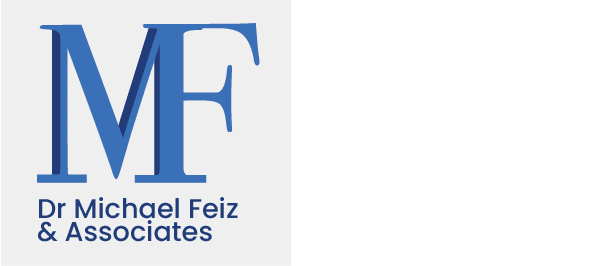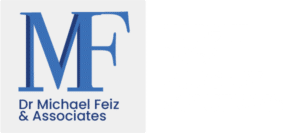Understanding the Link Between Varicose Veins and Obesity: A Path to Comprehensive Treatment
Varicose veins, those twisted and swollen blood vessels visible just under the skin's surface, are not just a cosmetic concern but a significant medical issue that can affect overall health and quality of life. For those struggling with obesity, the risk and severity of varicose veins can be even higher. At our clinic, we understand the intricate connection between weight and vein health. We offer comprehensive treatments that not only address varicose veins but also tackle the root causes associated with obesity. This integrated approach ensures that our patients receive holistic care, improving their vascular health while supporting their weight loss journey.
What are Varicose Veins?
Commonly referred to as “spider veins,” varicose veins are the nebulous, gnarled, bulging, and bluish-colored veins that appear on the legs and feet in both men and women, but are more prevalent in women. Varicose veins result from damage or weakening of the vein’s inner valves and walls. Veins possess one-way valves inside their walls that open and close to keep blood flowing toward the heart, as arteries carry blood away from the heart. Damaged valves and walls often cause blood to pool and/or flow backwards in some cases. Though not categorized as a serious medical concern, varicose veins can lead to more harmful health issues if left untreated. Often, they are a source of distress and embarrassment for many people, leading to one of the most common cosmetic complaints. Implementing a regular, low-impact workout routine, such as walking, is one of the best ways to reduce blood pressure inside the veins and arteries, thus mitigating the formation and appearance of varicose veins. For those with more significant varicose vein development, highly effective and minimally invasive treatments are available. Patients should avoid high-impact exercises as this may cause already existing varicose veins to swell and become enlarged.
What Causes Varicose Veins?
From a medical perspective, the exact cause of varicose veins remains unclear, but evidence strongly suggests that obesity or being overweight significantly contributes to their development and progression. Excess body weight places additional pressure on the veins, which can lead to damage or weakening of the vein walls and valves, ultimately resulting in the characteristic bluish, bulging veins commonly seen on the legs and feet. Other contributing factors may include:
- Pregnancy
- Genetics
- Leg trauma
- High blood pressure (increased pressure inside veins)
- Standing for long periods of time
- Poor circulation
- Age
- Sedentary lifestyle
While losing weight will not necessarily diminish existing varicose veins, it can prevent new ones from forming. In extreme cases, if left untreated and/or if the individual fails to lose the extra weight, varicose veins can lead to leg ulcers. Varicose veins commonly begin to appear in individuals during their 40s or 50s, but they can affect people as young as 20. These veins can be a significant concern, impacting confidence and appearance. Many individuals turn to body makeup products or self-tanning lotions and sprays to conceal these veins. However, as the condition progresses, these at-home or salon efforts may prove insufficient. In such cases, medical procedures designed to address varicose veins may provide more effective and lasting solutions.
(SOURCE: https://www.nhlbi.nih.gov/health/varicose-veins)
When treating painful, unappealing varicose veins, Dr. Feiz and Associates conduct cutting-edge, minimally invasive techniques with a cosmetic edge to yield the most aesthetically-pleasing, proven results. Most treatment options result in an almost-immediate reduction in the appearance of varicose veins. All treatments begin with a customary in-office ultrasound to help establish the exact condition/level of the affected area(s) and subsequent, optimal treatment plan.
- Compression Therapy – Mostly recommended for early-stage varicose vein formation, compression therapy consists of wearing prescribed compression socks to stimulate proper, healthy blood flow. Compression socks are not intended for long-term results, but merely a temporary fix and/or to slow the progression of further varicose vein development. Compression socks are very tight-fitting, hot, and extremely uncomfortable, thus lending to its short-term resolution.
- Sclerotherapy – Quick, simple, straightforward, and effective, this long-revered treatment option involves the injection of a safe, biodegradable solution that helps minimize the size of the varicose veins. Veins begin to fade before the patient even leaves the office! The vein-diminishing solution is injected directly into the vein, causing it to collapse and scar, promoting the body to re-route blood through healthier, more stable veins. The body eventually absorbs the destroyed vein into local tissue where it will soon fade away. Depending on how many areas need to be treated, including size of the affected veins, sclerotherapy can take anywhere from 30-60 minutes to complete. Patients enjoy zero downtime and the confidence to flaunt their new, vein-free physique. Keep in mind, lifestyle modifications are encouraged, such as implementing a low-impact exercise regimen to avoid future varicose vein formation.
- Microphlebectomy – This revolutionary treatment option for varicose veins involves the application of a numbing agent at the affected sites, followed by a barely perceptible incision where the varicose vein is secured and removed entirely from the body. Patients opting for this treatment should expect to feel a slight “tugging” or pulling sensation. Microphlebectomy is primarily recommended for latter stage, sizable varicose veins that cause significant discomfort to the patient. Incisions are less than 2mm in diameter and typically don’t require stitches. The entire procedure is completed between 30 and 60 minutes with little recovery required. Patients should expect to wear prescribed compression garments/socks or bandages for several days to several weeks, depending on severity of extracted varicose veins. Microphlebectomy boasts over a 90% success rate.
- Radiofrequency Ablation – Designed for problematic varicose veins, this minimally invasive procedure uses heat energy to essentially “collapse” and seal the affected veins. A numbing agent is applied before micro incisions are created into the skin. Then, a catheter is strategically inserted into veins emitting RF energy. From prep to post, patients can expect this innovative
varicose vein solution to take anywhere from 1-3 hours to complete and is performed on an outpatient basis. Compression socks will need to be worn post-procedure at the discretion of the doctor, as well as intermittent leg elevation. Low-impact walking is highly recommended to boost healthy blood flow to the legs.
- Endovenous Laser Therapy (EVT) – Similar to Radiofrequency Ablation, EVT uses laser heat therapy to reduce/diminish unwanted varicose veins. A beam of laser light is directed in the vein(s), shrinking and sealing them off and prompting blood to flow through healthier neighboring veins. EVT is recommended for swollen, bulging varicose veins that are painful and sore to the touch. Patients should expect to wear compression gear as directed following treatment. Mild bruising following treatment should subside within a few, short days. EVT possesses an impressive 97% success rate amongst patients and is a go-to treatment option for those suffering from long-term varicose vein affliction.
Next Steps
Caught up in the web of life? Let Dr. Feiz and his wonderful team of skilled weight loss surgeons help you regain the confidence you need to slip into that swimsuit or sundress you’ve been dreaming of wearing – again! Fill out the form below or call our office today.

